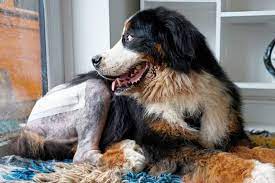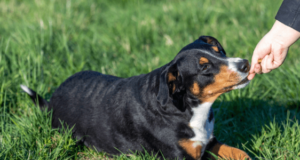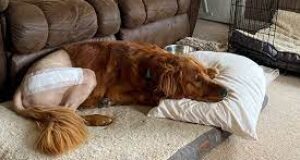Obesity is like a heavy storm cloud hanging over a dog’s health, especially when it comes to dog hip replacement. Just as a bridge can only bear so much weight before cracking, an overweight dog puts immense stress on its newly replaced hip, increasing the risk of complications. Here are 13 key issues, each painted with metaphors, similes, and literary allusions to illustrate the delicate relationship between weight and recovery.

- The Overloaded Cart – Extra Weight, Extra Pressure
A dog’s hip joint is like a wooden cartwheel, designed to bear only a reasonable load. When obesity adds unnecessary baggage, the wheel weakens, creaks, and eventually breaks down. This is exactly why overweight dogs struggle more after dog hip replacement. - The Sinking Ship – Surgery Success at Risk
A ship too heavy with cargo may sail initially, but sooner or later, it begins to sink. Similarly, excess weight increases the chances of implant failure, infections, and prolonged healing. - Walking on Thinning Ice – Limited Mobility and Pain
An obese dog walking after dog hip replacement is like a traveler on thin ice—every step is a risk. The extra pressure on the artificial hip can slow recovery, cause limping, and lead to secondary joint issues. - The Crumbling Foundation – Muscle Weakness and Instability
Just as a grand building needs strong pillars, a dog’s hip implant needs strong muscles to support it. Obesity reduces muscle strength, making movement difficult and increasing post-surgical instability. - The Sticky Molasses – Slowed Recovery
Healing is like a river that should flow freely, but obesity thickens the waters, making everything sluggish. The body’s ability to repair tissues, reduce inflammation, and regain strength slows significantly in overweight dogs. - The Domino Effect – Impact on Other Joints
When one domino falls, the rest follow. Similarly, when the new hip joint bears too much weight, surrounding joints (knees, elbows, and spine) begin to suffer, leading to further mobility issues. - The Unwanted Guest – Increased Inflammation
Obesity invites inflammation like an uninvited guest who refuses to leave. This hidden enemy delays healing, causes chronic pain, and makes post-surgery discomfort worse. - The Tight Rope Walker – Balance and Coordination Issues
Imagine walking a tightrope with a heavy backpack—hard to balance, right? An overweight dog struggles with coordination post-surgery, increasing the risk of falls and implant damage. - The Flickering Candle – Shortened Implant Lifespan
An artificial hip is like a candle meant to burn for years, but excess weight acts like a harsh wind, making it flicker out sooner. Obesity reduces the lifespan of the implant, sometimes requiring an early second surgery. - The Rusting Machine – Metabolic Issues
A dog’s body, like a finely tuned machine, works best when maintained properly. Obesity causes metabolic rust, slowing down energy levels, increasing fatigue, and making post-operative exercises difficult. - The Thorny Path – Higher Risk of Surgical Complications
Going into surgery with obesity is like walking barefoot on a thorny path—more obstacles, more risks. Overweight dogs have a higher chance of anesthesia complications, delayed wound healing, and post-operative infections. - The Weighed-Down Wings – Restricted Freedom After Surgery
A dog should regain its joy of movement after dog hip replacement, but obesity is like tying weights to a bird’s wings. Instead of running freely, the dog remains restricted, struggling to regain the active life it deserves. - The Compass of Hope – Weight Management for Better Recovery
Yet, every storm has a silver lining. With controlled diet, exercise, and weight management, an overweight dog can still find its way to healing. Dog hip replacement is not just about surgery—it’s about lifelong care, where reducing weight is like adjusting the sails to ensure a smooth journey ahead.

Obesity is a mountain that must be climbed, but step by step, it can be conquered. For a dog recovering from dog hip replacement, weight management is the golden key to a pain-free, active, and joyful life. After all, if a heavy cloud can drift away to reveal the sun, then surely, with care and effort, a dog can find its way back to boundless movement once more.




